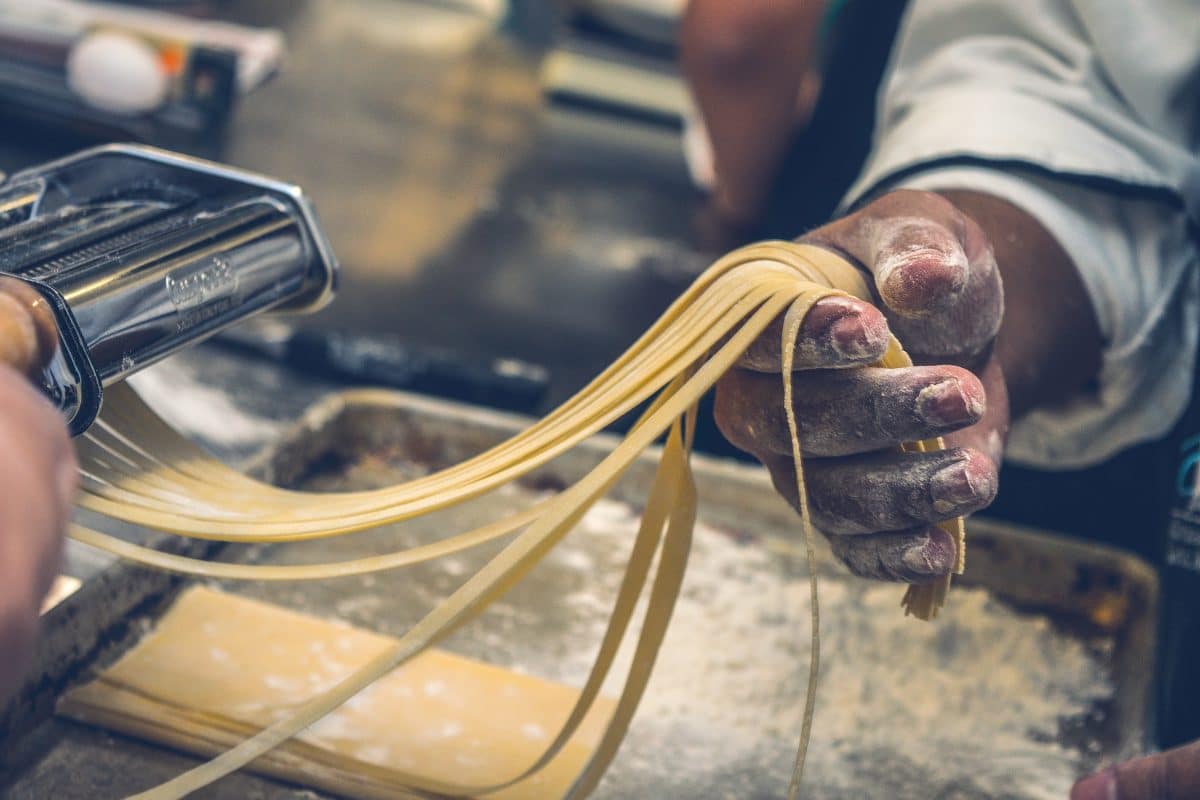Extruded pasta has a distinctive shape and texture, while rolled pasta generally has a more delicate texture and often used fresh.
Extruded pasta, such as macaroni and spaghetti, penne, rotini, rigatoni, fusilli, and bucatini are made using a machine that pushes the dough through a die to form the desired shape. The dough is usually made from a mixture of semolina flour, water, and sometimes eggs. Extruded shapes are often dried and used in dishes where the pasta is served with a sauce or in soups and casseroles, like Mac and Cheese.
Rolled pasta, such as fettuccine and pappardelle, tagliatelle, lasagne, are made by rolling and cutting the dough by hand with a rolling pin or with a pasta machine. The dough is usually made from a mixture of flour, water, eggs and sometimes salt. Rolled pasta is often used fresh in dishes where the pasta is the star of the show, like Fettuccine Alfredo. Fresh pasta is also used to make stuffed pasta dishes like ravioli or tortellini.
Dumplings, such as gnocchi and cavatelli are not categorized as either rolled or extruded pasta shapes. They differ from traditional pasta in ingredients and preparation. They both are small dumplings that are typically made from potatoes and flour, or flour, eggs and cheese. The dough is formed into small, round dumplings and then boiled until they float to the surface. They can be served with a variety of sauces.

